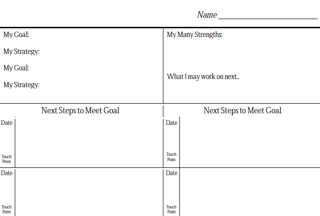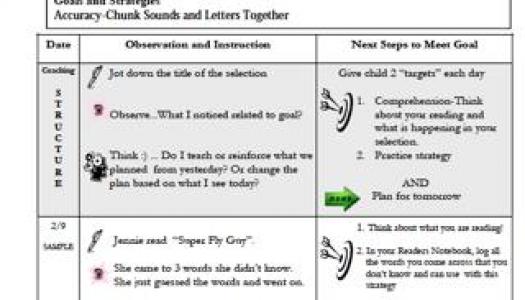Accountability and Conferring
Join Our Community
Access this resource now. Get up to three resources every month for free.
Choose from thousands of articles, lessons, guides, videos, and printables.
 Don't you love the feeling of pleasure and satisfaction that follows a really successful informal conference with a child? You know the ones; your conversation was engaging and authentic, your teaching point was perfectly delivered and applicable, the child got back to work right away, and you wished your principal had been there to see it all play out.
Don't you love the feeling of pleasure and satisfaction that follows a really successful informal conference with a child? You know the ones; your conversation was engaging and authentic, your teaching point was perfectly delivered and applicable, the child got back to work right away, and you wished your principal had been there to see it all play out.
Then, the pleasure turns to dismay the next time you check in because they can't remember what they were supposed to be focusing on. Sigh. We've been there.
While we expect our students to take ownership of their goals and learning, it is sometimes easier said than done. We noticed something in Pam Pogson's fifth grade classroom that may provide the link to accountability we want. Each student took three things out when it was time to Read to Self: the book they were reading, their reading journal, and a conferring form of their own to refer to. As Pam meets with students, they look at their respective forms, reviewing the previous teaching points and next steps. They each record important notations from each one-on-one conference, paying particular attention to what went well, a teaching point, and next steps. What a simple yet powerful addition to a conference.
The link below shows you the conferring form her student's keep in their notebooks.
What about primary? Trina is a teacher in Gail's school. She doesn't expect her young students to keep their own records, but she very intentionally shares her notes before she exits a conference. Reviewing and reinforcing what took place during the conference helps her children remember and be accountable for the expected learning. If you'd like something tangible, our friend, Lori Sabo uses Promise Cards. Judith Gould uses the word promise with younger students, feeling that it tends to mean more to them than the word goal. The promise cards function as bookmarks for ready reference of goals and the strategy the child is concentrating on. Lori fills them out as students meet their goals or are ready for new strategies and the students keep them in their book or book box.







